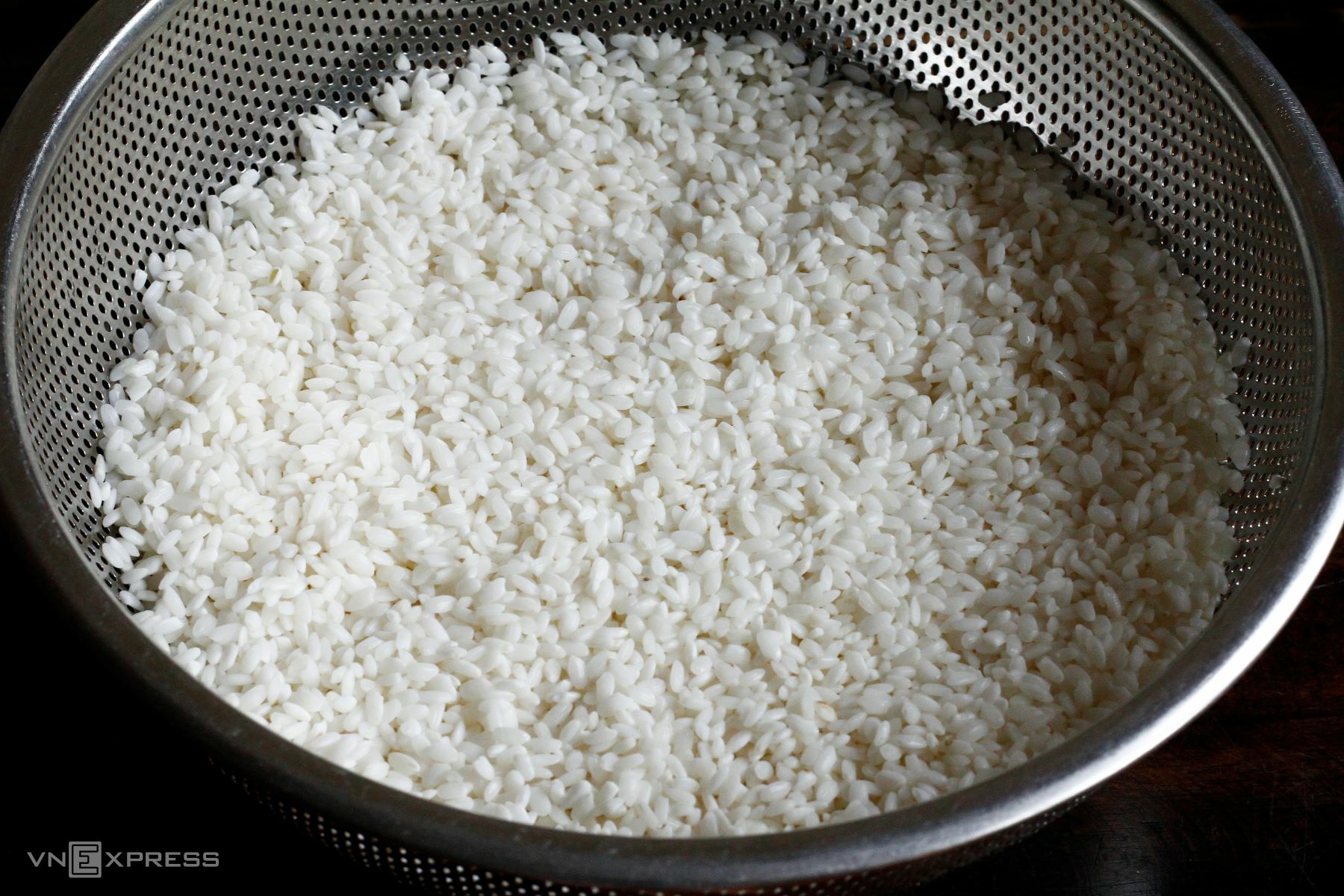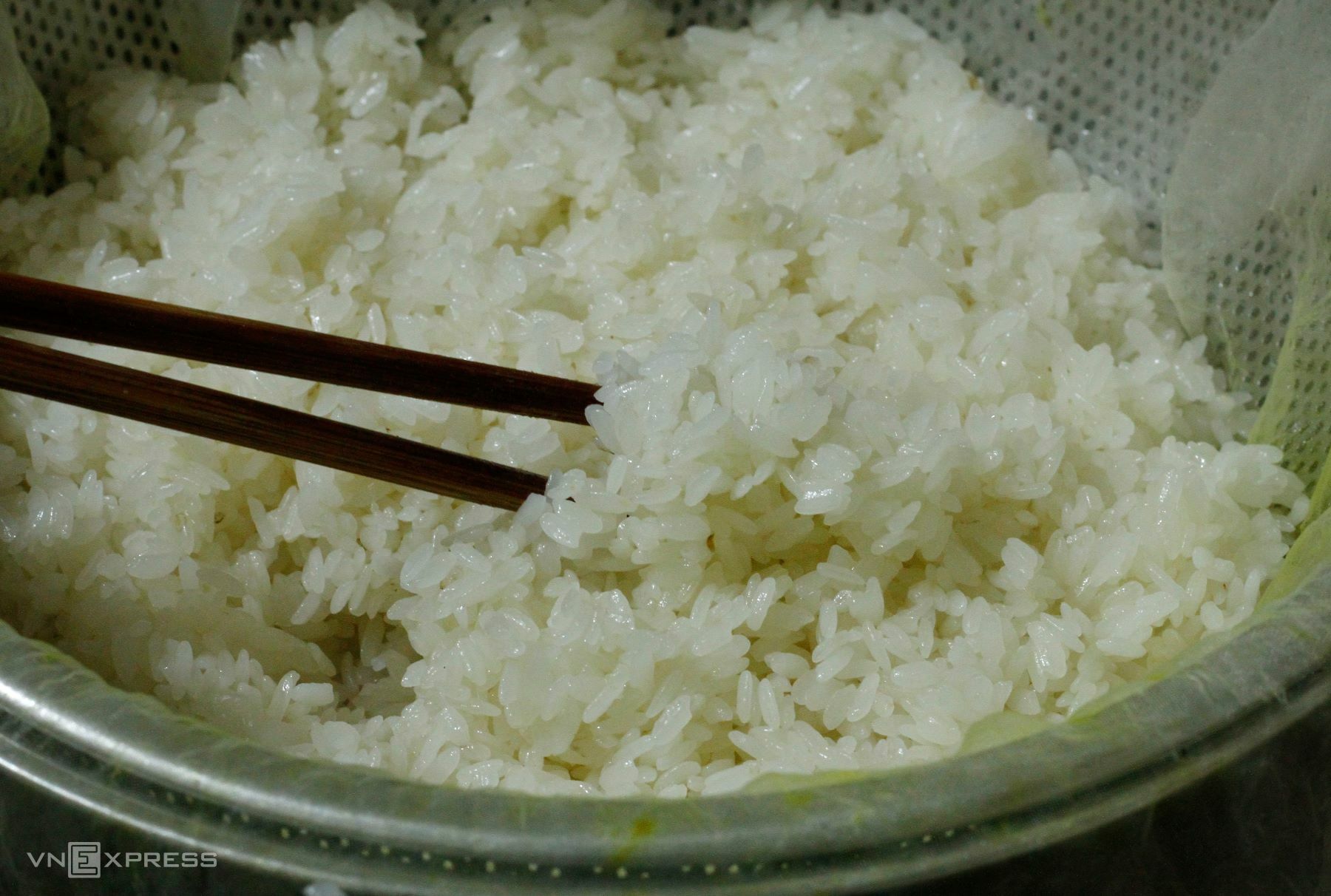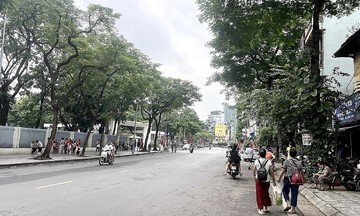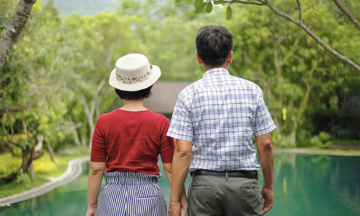Soaking ensures even cooking. Glutinous rice has a high amylopectin content, a type of starch that creates stickiness when cooked. However, glutinous rice is harder and absorbs water less readily than regular rice.
Traditionally, home cooks rinse and soak the rice for 6-8 hours before steaming. This allows water to penetrate deeply, softening the grains from the inside. When steamed, the steam easily cooks the rice evenly, preventing a hard core or dry exterior.
 |
Soaking reduces steaming time. Soaked glutinous rice cooks faster. When the starch molecules expand, the hot steam in the steamer quickly transforms them into a soft, sticky texture. If the rice grains are dry inside, the outer layer absorbs heat slowly, requiring more time for water to penetrate, thus prolonging the steaming process.
Soaking results in softer, shinier sticky rice. Sufficient soaking allows the starch in the glutinous rice to fully transform, creating a soft, plump texture. Without enough water, the rice tends to become dry, crumbly, or broken. This is why traditional sticky rice dishes like "xoi vo" (crushed sticky rice), "xoi gac" (gac fruit sticky rice), and "xoi do xanh" (mung bean sticky rice) all require 6-8 hours of soaking, or even overnight, depending on whether the rice is old or new. Proper soaking also ensures the sticky rice remains soft and doesn't become hard if left out for a while.
Soaking improves digestibility. Soaking glutinous rice before steaming also helps remove a small amount of anti-nutrient compounds like lectins that remain after milling. Although the lectin content in milled glutinous rice isn't high, frequent consumption of sticky rice can still cause indigestion.
According to traditional Vietnamese medicine, glutinous rice is warming and beneficial for the spleen and stomach, but if not soaked thoroughly and cooked until soft, it can cause bloating and indigestion. Pre-soaking ensures the rice is perfectly cooked and soft, making it easier to digest, especially for the elderly and children. In the Five Elements theory, glutinous rice belongs to Earth, which is yang. Soaking it in water (Water) harmonizes Water and Earth, creating a balanced dish that is easier to absorb.
 |
Photo: Bui Thuy |
Soaking times vary depending on the type of glutinous rice ("nep cai hoa vang", "nep huong", "nep nhung", "nep Thai", etc.) and whether the rice is old or new. Newly harvested upland sticky rice only needs 3-4 hours of soaking. Other types typically require 6-8 hours. After soaking, rinse the rice to remove any sourness from prolonged soaking, drain well, and then steam to prevent stickiness or mushiness. Avoid soaking glutinous rice for too long (over 12 hours).
To achieve perfect sticky rice, in addition to soaking, the following tips will help keep it fragrant, soft, and plump even after some time: Steam the rice in two stages (steam for 30-35 minutes, then remove and let it cool. Steam again for 10-15 minutes before serving). Line the bottom of the steamer with a cheesecloth and cover the surface to prevent condensation from making the rice mushy. Bring the water to a boil before placing the steamer on top, ensuring the water level is about halfway up the pot. Poke a few holes in the surface of the rice to allow heat to escape, ensuring even cooking.
Bui Thuy












